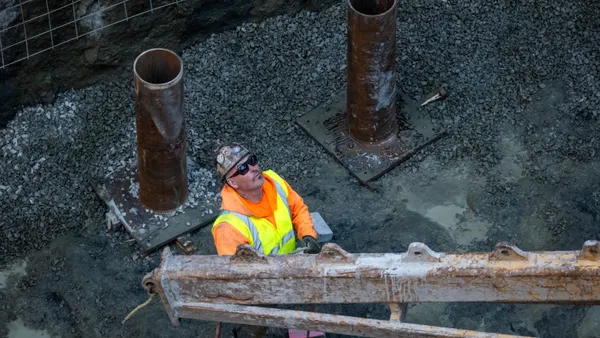Dive Brief:
- A new report from Research and Markets forecasts the world market for sustainable construction materials will hit $187 billion by 2026, which represents an 11.6% compounded annual growth rate between 2017 and 2026.
- In its "Global Construction Sustainable Materials Market, Analysis & Forecast, 2017 - 2026: Focus on Type, Applications and End-User" report, Research and Markets found that the increased use of green materials is being driven by trades such as insulation, roofing, framing, exterior siding and interior finishes across most sectors, including residential, industrial and commercial. North America had the highest market share of the global market – almost 35% by both volume and value.
- The general benefits to the environment, reduced emissions, more efficient energy consumption and their potential for reuse and recycling, according to Research and Markets, is beginning to give sustainable materials an edge when compared to their traditional counterparts.
Dive Insight:
Contractors play a major role in how green a project ends up being because they're the ones who order materials and monitor operations to ensure compliance with the owner's sustainability objectives. Green certification programs, however, are the likely forces behind many sustainability initiatives, and there are several from which to choose.
The most popular green certification program is the U.S. Green Building Council's Leadership in Energy and Environmental Design program, better known as LEED. According to the USGBC, more than 2.2 million square feet of space is LEED certified every day and nearly 92,000 projects can claim that designation. The USGBC awards LEED credits based on the type of materials and the building's energy sources and efficiencies, as well as other factors.
Probably the most stringent of all green programs is the International Living Future Institute's Living Building Challenge. The basic concept behind the certification is that a building should have minimal impact on its surroundings, functioning with the same efficiency as a flower would. As part of the certification process, the building must achieve a certain number of imperatives that are part of the program's seven performance areas, which include place, water, energy, health and happiness, materials, equity and beauty. Because this type of program requires such dedication and strict compliance with tough standards, there are currently only a handful of Living Building Challenge-certified projects.













